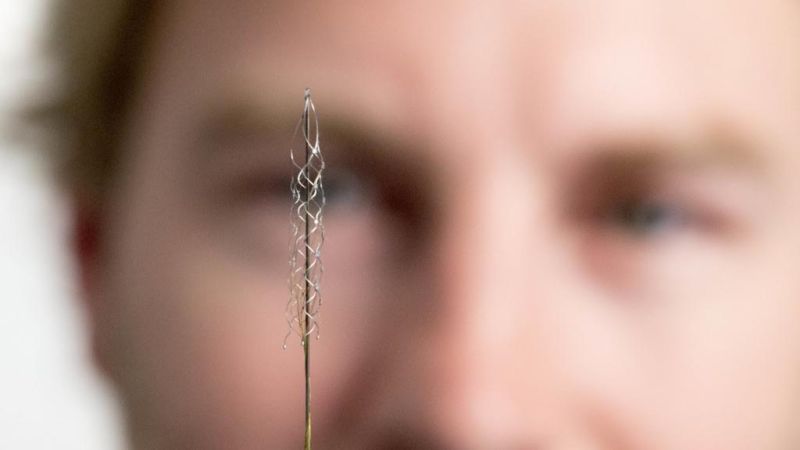Building a bionic spine
Ars Technica » Scientific Method 2016-09-26

Enlarge / Behold, the stentrode. (credit: University of Melbourne)
Australian neurologist Tom Oxley was on vacation in the US in November 2010 when he decided to do a bit of work. So he pitched an electrode array for reading brainwaves to the Defense Advanced Research Project Agency’s (DARPA) Military Prosthetics program. Instead of requiring invasive surgery to implant directly into the brain, Dr. Oxley’s electrode array could be threaded into a vein passing through the brain.
Oxley was surprised to get a response straight away, inviting him to discuss his device in person. At his meeting with DARPA’s Colonel Geoffrey Ling, Oxley got a bigger surprise still. Here’s how Oxley describes the encounter:
[Col. Ling] leaned back in his chair and said, “Well that’s interesting. No one has been doing that at DARPA. Why don’t you go home and put a team together, and we’ll give you a million dollars to build this thing.”
Easier said than done. As a neurologist, Oxley didn’t have the engineering know-how to build a complicated electronic device that could be compressed into a sub-millimeter catheter and still retain its signaling abilities. And he didn’t know who could; he wasn’t an academic with years of research collaborations and connections behind him. “It was surreal,” Oxley told one interviewer. “All of a sudden I’d started my PhD and had several million dollars to work with and a whole area to start my own lab.”